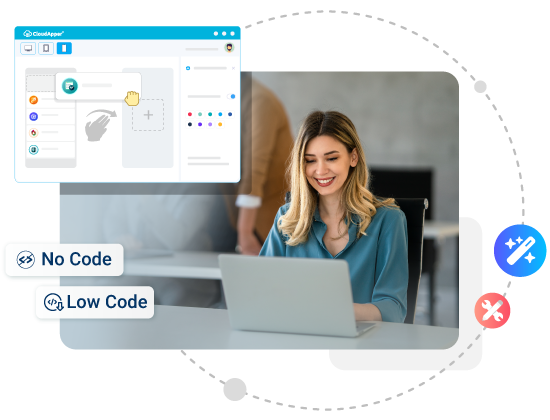Low-code development is defined as a simplified software development approach that uses simple commands and visual tools. This form of development can be effectively achieved without prior coding experience and requires no coding knowledge.
This means that anybody can create a software or application with a low-code development platform. Low-code development platforms have been gaining popularity among businesses and individuals who want to create applications, but lack any prior knowledge on how to do so.
However, to several people within the computer science field, the idea of creating an application while having to write minimal code is not a new concept. In the 1980s and 90s, there was a computer programming language that was gaining traction among developers called fourth- generation language – 4GL. Unlike machine languages and assembly languages, 4GL was intended to be easier to operate. But what exactly is 4GL, and how do low-code platforms differ from 4GL?
What is Fourth Generation Language
Fourth Generation Language is a programming language that was designed with non-programmers in mind. The language is simplified, and often requires fewer commands when compared to other languages, and aims to reduce the effort and amount of coding required when developing software. Originally introduced in the 1980s, the language has seen a reduction in use. That is until the comparisons with low-code development platforms began to increase. But is it reasonable to make the comparison between 4GL and low-code platforms? Let us take a look at what low-code platforms are.
What is a low-code platform?
“Low code” has become a buzzword in recent years. It is a term that refers to systems and platforms, that develop applications at a fast rate of development, with minimal coding knowledge and experience required. With minimal coding required you may be wondering how exactly does this work? Low-code platforms use a drag and drop method of commands. Visual commands are a key aspect of low-code development, and partially the reason why it is so often compared to 4GL. Fourth Generation programming language employs a lot of graphical interfaces and icons in the programming language.
Differences between 4GL and Low Code
With a better understanding of the two platforms, we can now unpack the differences.
Vendor Dependency
One of the key issues that resulted in the reduction of 4GL platforms is the dependency on the developer. Solutions created through the fourth-generation programming language required constant assistance from the vendor. The reason for this is because the software solution, in many cases, could only be implemented or operated using tools provided by the vendor.
Low-code platforms, on the other hand, reduce dependency on vendors, as well as internal IT departments. Low-code platform vendors understand that accessibility and empowerment are crucial. That is why several low-code platforms are cloud-based and do not require any specific software or hardware to be installed.
Customers are locked down to a platform
Dependency on IT departments and vendors was not the only problem faced by companies who chose a 4GL solution. As companies grow, their needs change. If a software system is not scalable, a company will be required to change the system for something more suitable. 4GL systems lock down customers to the vendor’s proprietary system.
Low-code platforms provide much more flexibility, from the ability to integrate low- code developed solutions with common ERP systems such as SAP 2000, to the ability to transfer data if the company chooses to change systems.
Conclusion
While there are similarities between 4GL and low code systems it is evident that low-code platforms are far more advanced, and address the problems that led to the reduced use of fourth-generation programming language. We can now see that the hesitancy around low-code platforms is no longer necessary, as they can benefit many companies and software developers.
What is CloudApper AI Platform?
CloudApper AI is an advanced platform that enables organizations to integrate AI into their existing enterprise systems effortlessly, without the need for technical expertise, costly development, or upgrading the underlying infrastructure. By transforming legacy systems into AI-capable solutions, CloudApper allows companies to harness the power of Generative AI quickly and efficiently. This approach has been successfully implemented with leading systems like UKG, Workday, Oracle, Paradox, Amazon AWS Bedrock and can be applied across various industries, helping businesses enhance productivity, automate processes, and gain deeper insights without the usual complexities. With CloudApper AI, you can start experiencing the transformative benefits of AI today. Learn More

















